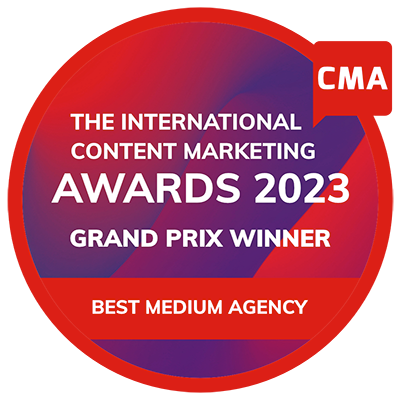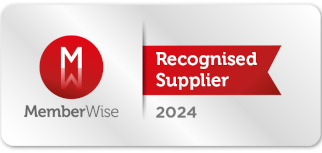
Using content to evaluate loyalty and customer retention
Howard,
-
DOWNLOAD
Your Content Marketing Checklist >

-
REQUEST TODAY
A Content Consultation >

With apps, social and email at everyone’s fingertips, the types of loyalty schemes or customer retention programmes are now countless and how marketers seek to utilise them, or evaluate the success of loyalty schemes are just as varied.
But content, as a means of communication for and about loyalty programmes and how consumers respond; from visits and opens to likes, shares and action. must be a big part of any evaluation we do around customer retention.
Usefulness or efficacy of loyalty or retention programmes depends on the type business, the nature of the scheme, the type of customer and what you're looking to achieve.
Retention schemes naturally align with core business metrics around new sales, repeat sales, up- and cross-sales. But it’s not as simple as that and the purpose of this blog is to help outline how content and its evaluation can play a significant role in the process and both differentiate and deepen engagement.
This blog on content and loyalty may be of value to read first if this approach is new to you.
What is a loyalty scheme?
According to Yotpo’s annual State of Brand Loyalty survey: 80% of global consumers agree with the statement that brand loyalty is characterized by the tendency to buy from the same brand.
That might be stating the obvious, but any marketing strategy designed to encourage customers to continue buying, shopping or renewing services may serve the same end but can involve multiple tactics, combined with technology or eCRM software to support the practice.
Customer retention techniques will vary wildly from a luxury brand to a supermarket, from B2C to B2B.
The most rudimentary way of evaluating any customer retention scheme is by asking, ‘Are people buying from me again?’
CRM and the RFM model
CRM software like Demandware, Venda, Visualsoft, SAP, Oracle, Salesforce, Microsoft Dynamics, Shopify and Magento will assist by helping you to understand the RFM model and segment customers via:
- How recently they shopped (Recency)
- How often they shop (Frequency)
- How much they spend when they shop (Monetary Value)
Different types of customer retention schemes from the simple (10% off your next purchase) through to points-based to tiered loyalty schemes can also be employed. Businesses often seek to look at customers through the following monetary lenses; repurchase ratio, upsell ratio, customer lifetime value and a customer loyalty index.
Content plays a significant role in all of these processes and tactically, wherever possible, you should be using it to target your consumers in a more personalised way. See how email marketing can support this approach.
Any evaluation will mean aligning communications directly to sales – as well as how much the content costs to generate the sales.
However, content can also play a significant role beyond the simplistic in bringing the brand to life – and here’s where the picture can become a bit more complex as we’re evaluating not only brand but also…
What type of loyalty do you have?
The Loyalty Report 2019 suggests any loyalty or customer retention scheme should also be seeking to answer the following:
1. Is the customer retention programme meeting the needs of the consumer?
2. Are consumers enjoying participating?
3. Is it making the brand experience better?
4. Is the programme consistent with brand expectations?
5. Are the rewards and benefits appealing?
These should be fundamental concerns. There are a number of ways of evaluating success here; polls and surveys are still viable but evaluating the content created by the brand and that created by consumers can be of value from a quantitative and qualitative approach.
Google and social media analytics are of value here of course to evaluate the impact of content through the lens of visits, dwell time, number of pages visited, bounce rate as well as views, likes, comments and shares. Meanwhile, social media listening tools can also be invaluable here to get a sense of what people are really saying about your brand further afield on the internet.
Another way of looking at loyalty was conceived by Maritz Motivation Solutions in 2015 when they conducted research into customer retention. They asked 2000+ customers from millennials to baby boomers in the US about their brand loyalty.
The insights resulted in the 4D loyalty framework which indicates the following types of loyalty brands may experience:
Inertia loyalty - Customers shop from you because there are no other alternatives they can choose from.
Mercenary loyalty - Customers are loyal to you because they can save money.
Cult loyalty - Brands that are part of the consumers’ identity.
True loyalty - Because consumers love the product and service.
Naturally, the latter is where every brand wants to see themselves and where we, Dialogue, as an agency can add most value.
Again, understanding sales together with consumers’ response to your brand, communication strategy and content output can indicate which type of loyalty you have. But key to focus on here in particular is digital ‘word of mouth’ (shares, comments) which will highlight where the brand sits in this framework and how far it’s moving the dial in its communications.
Analysing loyalty and content
We may also seek to evaluate the consumer in regard to their connection about the brand and their likelihood to promote the brand. Businesses also therefore look at a net promoter score (users are scored between 1 and 10; promoters 9 – 10; passives 7 – 8; detractors 6 or less) and a customer engagement score.
Looking to the content and how it's consumed by our customers should be part of the analysis process.
The performance of content across key customer retention platforms like email and social media is a must. Comparing our 'now' to what we've done historically, to industry benchmarks and KPI's give us a good insight as to just how well our content is succeeding.
The changing user journey and customer retention
However, it's worth noting that the customer journey and how we shop is changing. Subsequently, for many businesses, this means thinking about things in a less linear way than we may have done previously.
The new McKinsey consumer decision journey proposes consumers’ experience with a brand affects their understanding with every other competitor brand *and* its activities and products in the sector.
So, how a business treats and communicates with its audience needs much greater consideration than simply, 'are they buying from me again?' The success of our content also aligns to more subtle metrics like brand building and word of mouth. For example, according to McKinsey, more than 60% of skincare products buyers go online post-purchase to conduct further research.
So how do we evaluate these more subtle nuances and understand how content relates to loyalty?
Recognition, engagement, satisfaction, loyalty and advocacy
Digital allows us far greater insight into the loyalty experience and how our digital content is working. The challenge is not the lack of data but the categorisation of the data around content.
We may therefore look to classic evaluation patterns: how is what we’re doing leading to greater recognition? Engagement? Satisfaction? Loyalty? And advocacy?
This tiered evaluation allows us to understand how we're affecting consumers from the more casual response to one which is about deeper connection and word of mouth.
And so we can look at the role of content and how it's performing within each of these areas.
For example, if we were looking at satisfaction in regard to the content a brand provides, we may be asking the consumer:
- How happy are you with the brand communications? (including tone of voice, nature of content, platform the communications are delivered through)
- What types of content do you prefer (including guides, events coverage, types of features etc)
- Does the content make you feel part of a community
- What do you do with any printed magazine or materials after you’ve finished with them?
- What do you think of the balance between content and advertising / size of magazine etc?
- How have you responded to content provided (from the business or any advertiser?); have you gone online, bought something, attended an event?
We can help you with any of your loyalty content issues, take advantage of our FREE accessible digital content consultation here.
Annoyingly, there’s not a one-size fits all loyalty evaluation metric, so adapting existing models and creating your own benchmarks and KPI's is vital to give you both the holistic and detailed insights you need on what you're trying to achieve.
And while monetary value has to be at the top of any analysis, it’s vital to evaluate the supporting content your brand or consumers are creating to give you a full picture of your relationship and value to them.
Resources
Brand Loyalty Report
McKinsey Consumer Decision Journey
4D Loyalty Model
We can help you with any of your loyalty content issues, take advantage of our FREE accessible digital content consultation here.
Read more insightful articles
See more from the blogContent marketing – are you taking a sustainable approach?
The changing face of the luxury consumer
Evaluating the success of your email strategy
How to create a digital magazine
Proud to be a winner of industry awards, recognised as content marketing experts in print and digital media.












